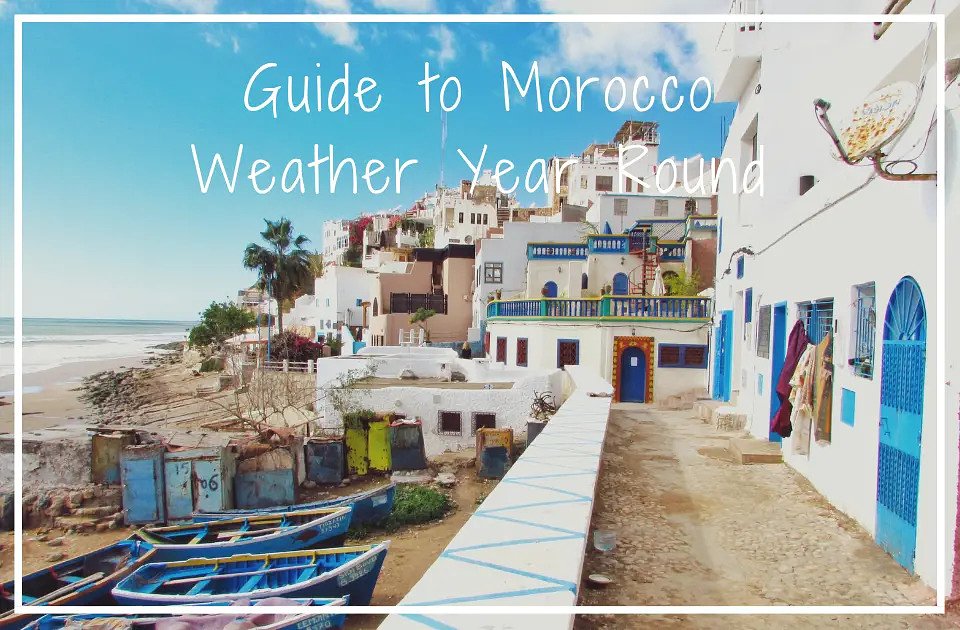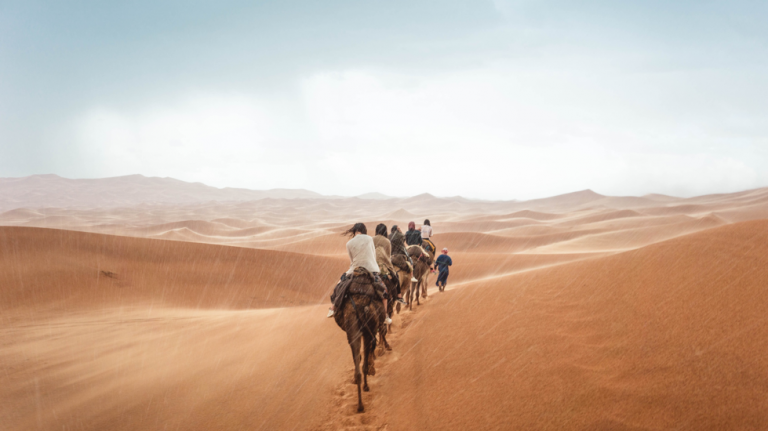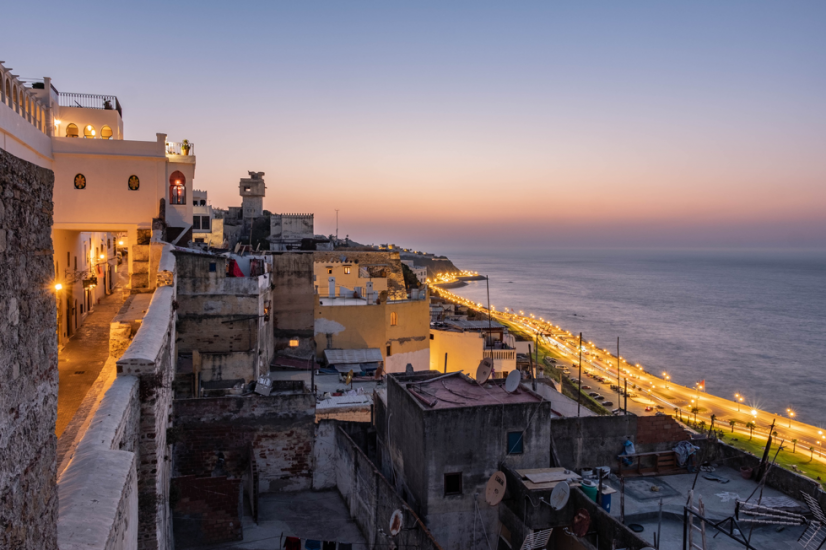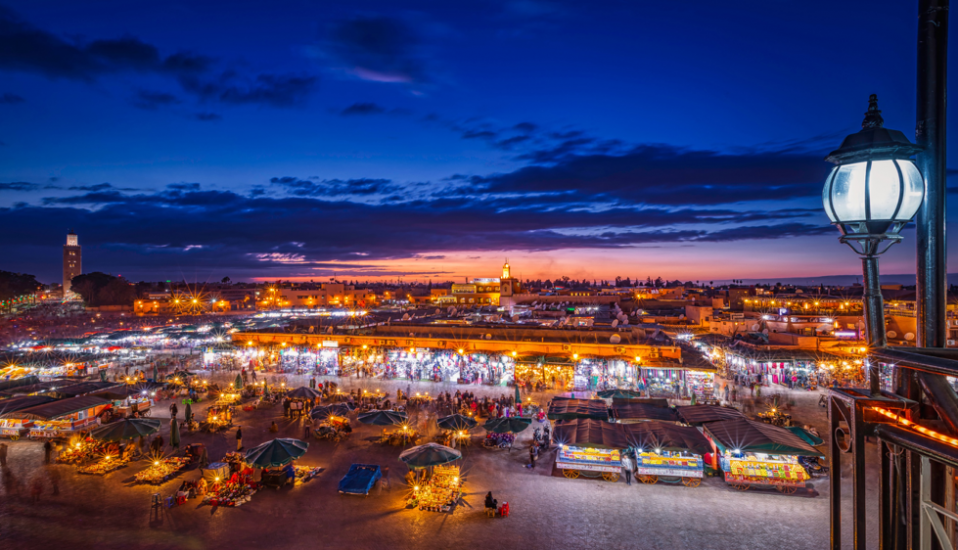Guide to Morocco Weather Year Round

Posted on Fri 25 Jun 2021
Thanks to its beautiful summer weather, glorious coastal regions and opulent resort hotels, it has developed a reputation with sun-seekers as an alternative holiday destination to Europe. That being said, it is not strictly a summer location, with plenty of reasons to lure travellers during the less warm months of the year. In this article, we’ll be looking at the differences in weather throughout the months and what you can expect to see and feel during your stay.
Winter:

December: Thinking about spending Christmas in Morocco? Well, unlike much of Northern Europe, Morocco remains relatively mild with average temperatures in the mid-teens. The south tends to be a little warmer with areas such as the Atlas Mountains experiencing colder weather. Snow is also common during the month of December, again, this is almost always exclusive to northern areas of high altitude. Typically, the month will experience a week’s worth of rainfall on average and most days will have roughly seven hours of sunshine.; this will leave you plenty of time to explore the beautiful cities of Morocco.
January: The start of the new year brings with it some equally mild temperatures with potential highs of 20 Celsius and lows below ten, especially in higher and northern areas. It is also the wettest month of the year as there are more days of rainfall than any other month, on average. Snow can also be common in January and signals the start of our Morocco skiing experience which runs through to the end of February. Our trip takes you into the Atlas Mountains in the north of the country, a truly unique experience.
February: With the coming of February, we start to see temperatures consistently rise into the 20s, at least within the cities. In northern areas, snow can still be seen, and our skiing trip will be available until the end of the month. Rain will begin to decline, with only three or four days within the month. In February, prices will typically be lower for both flights and hotels, especially those on the more luxury end of the spectrum. Watch out for February half term though as this can see prices rise for the week.
Spring:

March: This is a great time of year to visit as the crowds haven’t yet formed and you’ll be able to enjoy the cities and coastline of Morocco without the hustle and bustle of peak season. Temperatures, although not high, can be warm and balmy, perfect t-shirt weather! Even in northern areas, the sun shines for long periods of the day, with roughly eight and a half hours per day. Nights are still chilly, even in the cities, so make sure you pack a few warmer pieces of clothing, with temperatures dropping to mid-teens and often colder.
April: With the Easter holidays signals the start of the tourism season in Morocco. For young families, this can be a great time to visit as the temperatures are lovely and warm but not too hot for the little ones. Days are longer, allowing you more time to explore the souks of Morocco or the beaches on the coast. We’d suggest making reservations sooner rather than later for this month as places can begin to fill fast, especially if you have somewhere specific in mind. Temperatures are consistently in the low 20s and can even reach into the mid to high range towards the end of the month.
May: At long last! The 30 degrees Celsius marker will likely be hit during May as temperatures continue to warm throughout the month. In keeping with April, sunshine hours and days, in general, become longer. Tourism really starts to ramp up, especially in the cities, adding to the busy city vibe that many have come to know and love places like Marrakech and Rabat for. Coastal areas also begin to warm accordingly, and resorts on the coast see a fresh influx of visitors. May is popular with couples and older travellers as schools have not broken up yet, allowing for a slightly quieter holiday experience.
Summer
June: With some schools across Europe breaking up as early as mid-June, you may still be able to snag a deal or two if you travel in the first week. Equally, compared to July and August, prices are still quite low if you have children that have already broken up from school. If you’re not travelling with children and are keen to avoid the crowds, early June is the best time to visit. Weather in June is fantastic, very warm with temperatures reaching into the mid-30s at the end of the month.
July: July signals the start of the sweltering temperatures in Morocco, with each day having highs of mid to high-30s. For some, this can be a little too hot, so if you’re not a fan of the heat, we’d suggest steering clear of July, August and early September. July is also a very dry month, so make sure to always pack water whenever you head out on a trip during the day, regardless of where you’re going.
August: Much like July, the heat in August can be unbearable for some, with temperatures hanging around the mid to high 30s during the days. Early afternoon tends to be the hottest part of the day, so taking a dip in the pool or the sea can help you cool off. Alternatively, you could choose to employ the Spanish siesta and then head out later in the day to enjoy the last sparks of daylight. Typically, August days have 10.5 hours of sunshine, plenty to enjoy throughout the day. Evenings are long and drawn out too, allowing plenty of evening exploration, in the markets or the more boutique areas of the cities. July and August are by far the busiest months in terms of crowds, so expect busy city centres and coastal resorts if you’re planning to get away at around this time.
If you’re planning to visit during the warmer months, we’d suggest checking that your accommodation has air conditioning as this can provide some much-needed respite from the relentless heat. Although you may want to strip down to short shorts and a vest top (or something equivalent), for women, this can attract unwanted attention when venturing into the cities. Therefore, we’d suggest packing some slightly more modest garments that can still keep you cool, such as light cotton and other breathable fabrics.
Autumn

September: Temperature begins to drop in September, although not by a lot, as the mercury can still regularly reach into the 30s. Night times get a little cooler too, which can be better for sleeping for those who struggle in the heat. Although many schools go back during the month, September is still a popular month for visitors such as couples and older groups as they can enjoy the weather without the crowds of families.
September is an excellent month for exploration as the long days allow you to squeeze a lot in. Whether you plan to visit the northern mountainous areas or the beautiful coastal beaches, this can be a great time to do so. This is also a great month to head out into the Sahara Desert, allowing for some truly amazing and picturesque sunset photos.
October: October is one of our favourite months to visit Morocco, especially the city of Marrakech, as crowds begin to decline in preparation for the winter months. Weather is still balmy, with rain still keeping at bay for the majority of the month, leading to between five and six days of rain. October, like September, is perfect for exploring the country! Maybe you could take a train from one city to the next, with cities such as Tangier, Fez and Rabat being popular choices from Marrakech. Expect slightly shorter and cooler evenings, so something like a warm shirt or light jumper will be a necessary addition. If you’re travelling in the north, jeans and good walking boots will come in handy, as although the weather can still be warm, it’s always best to be prepared.
November: Although higher temperatures are still possible in November, even into the upper 20s, average temperatures typically range from 18 to 23 Celsius. Rain is more likely in November than in the previous month, with roughly eight days of rainfall across the month, meaning you’ll likely encounter some if you travel for a week away. We’d suggest packing both breathable and layered clothing as temperatures can fluctuate between quite warm and slightly chilly. Although warm weather is possible in the month, layers will be your friend as it could just as easily be 14 Celsius throughout the whole day. In November, it is also possible that flash floods can occur, which can cause havoc for both locals and travellers. This should be taken into account when travelling in the colder months.
Morocco is truly a unique travel experience, combining European influences with African and Middle Eastern traditions, it really does bring many worlds together. Why not check out our desert experience for a taste of the city combined with the tranquillity of the desert? You can also find out more about Morocco on our travel blog here!
Read more from our blog here

